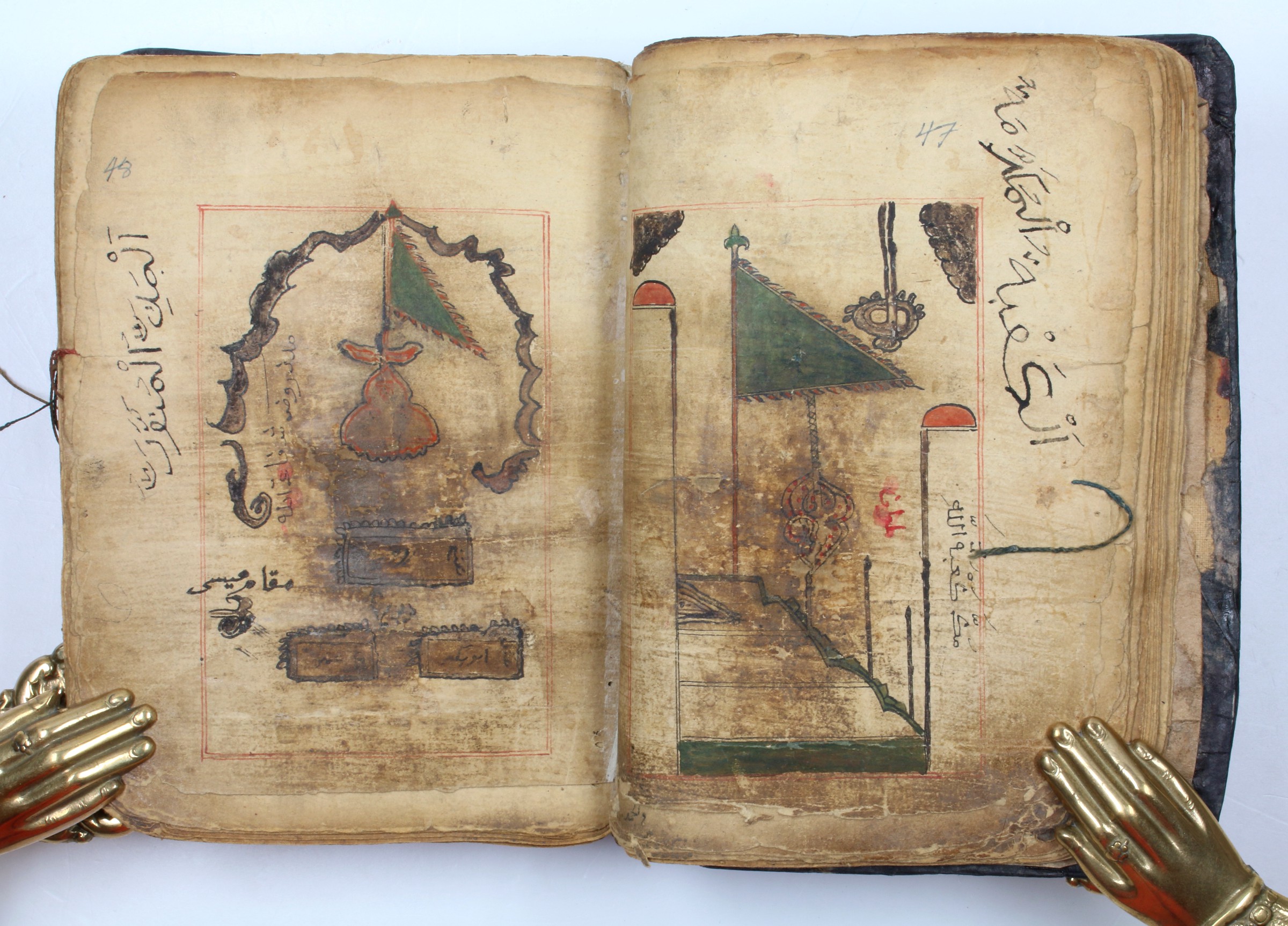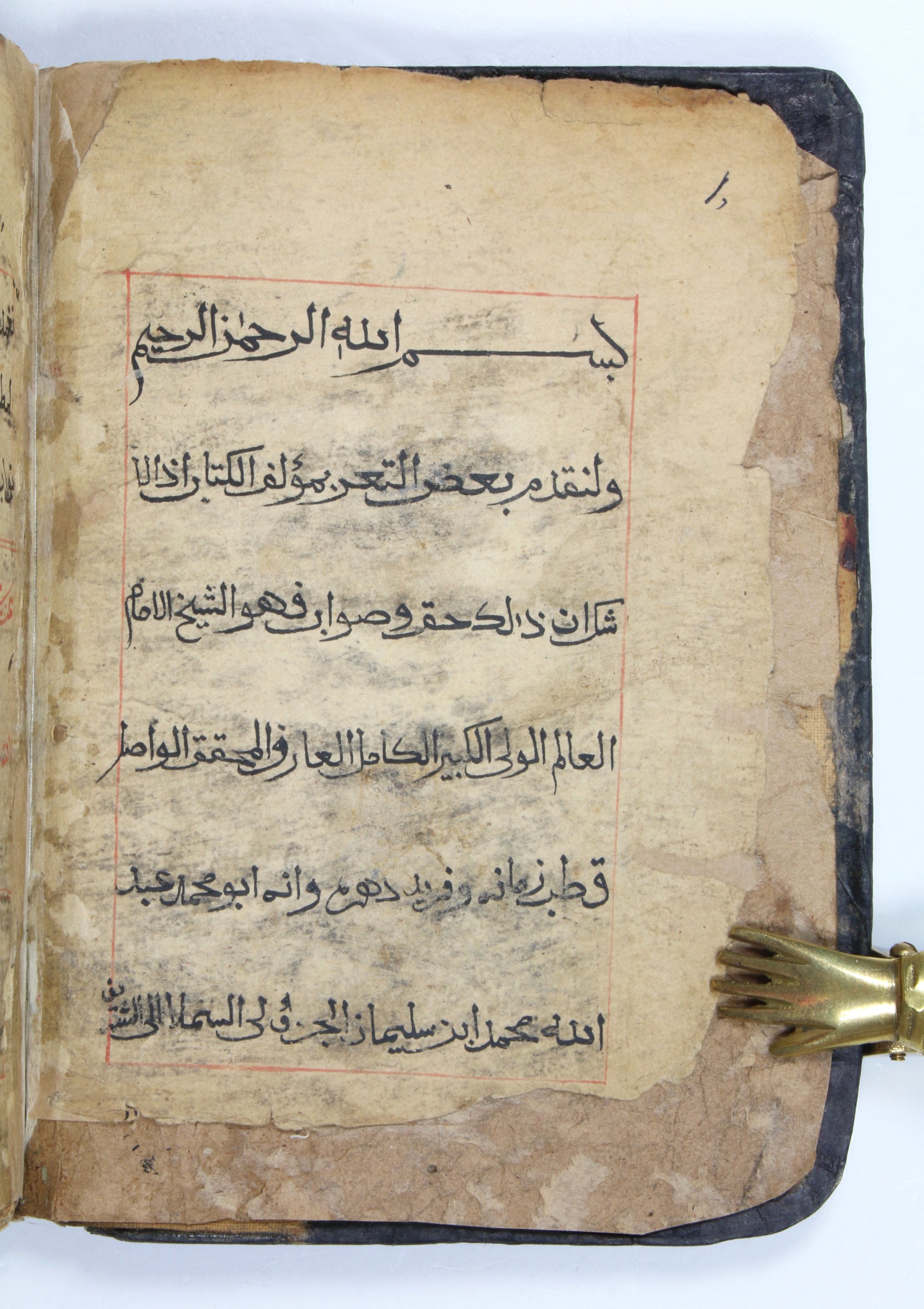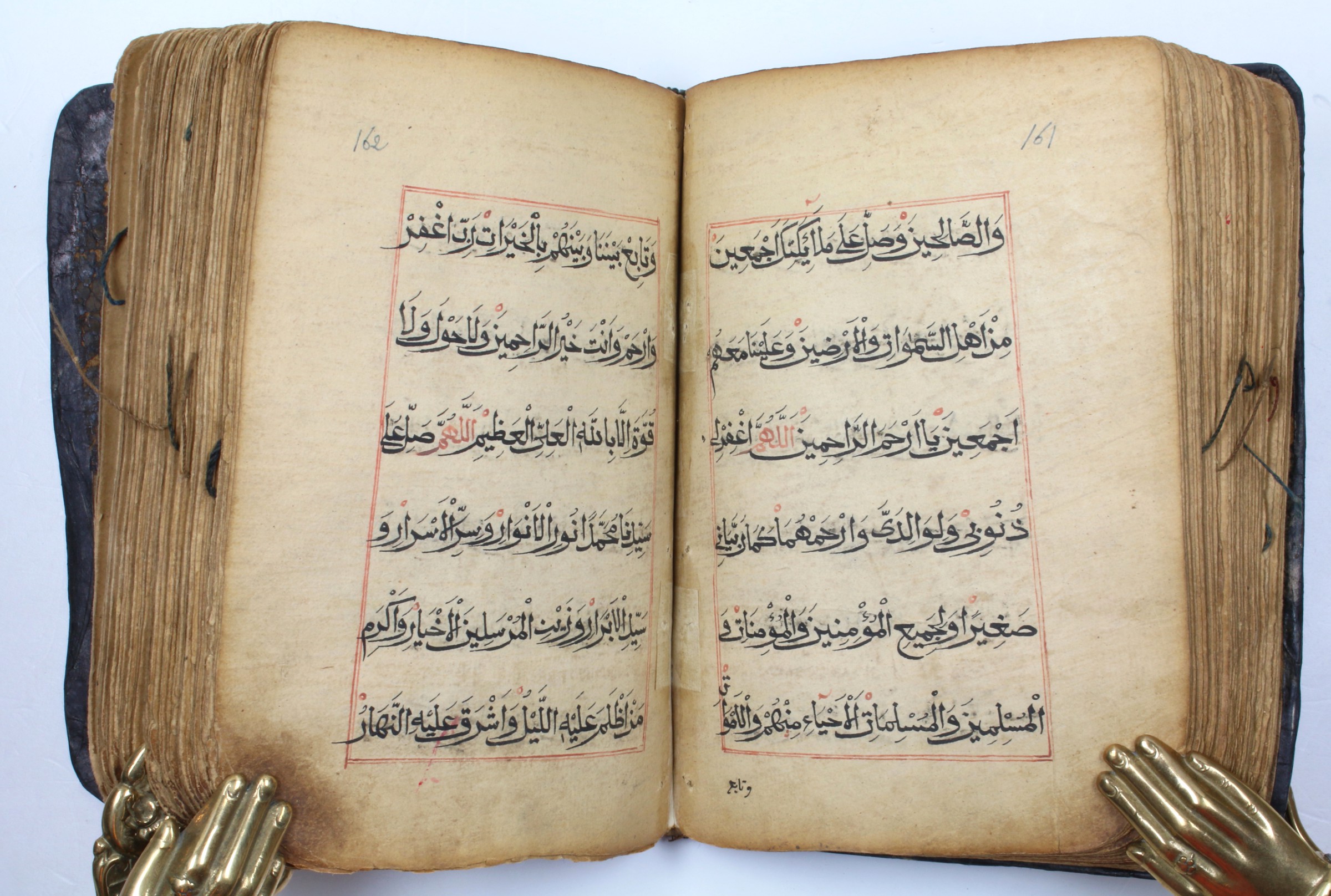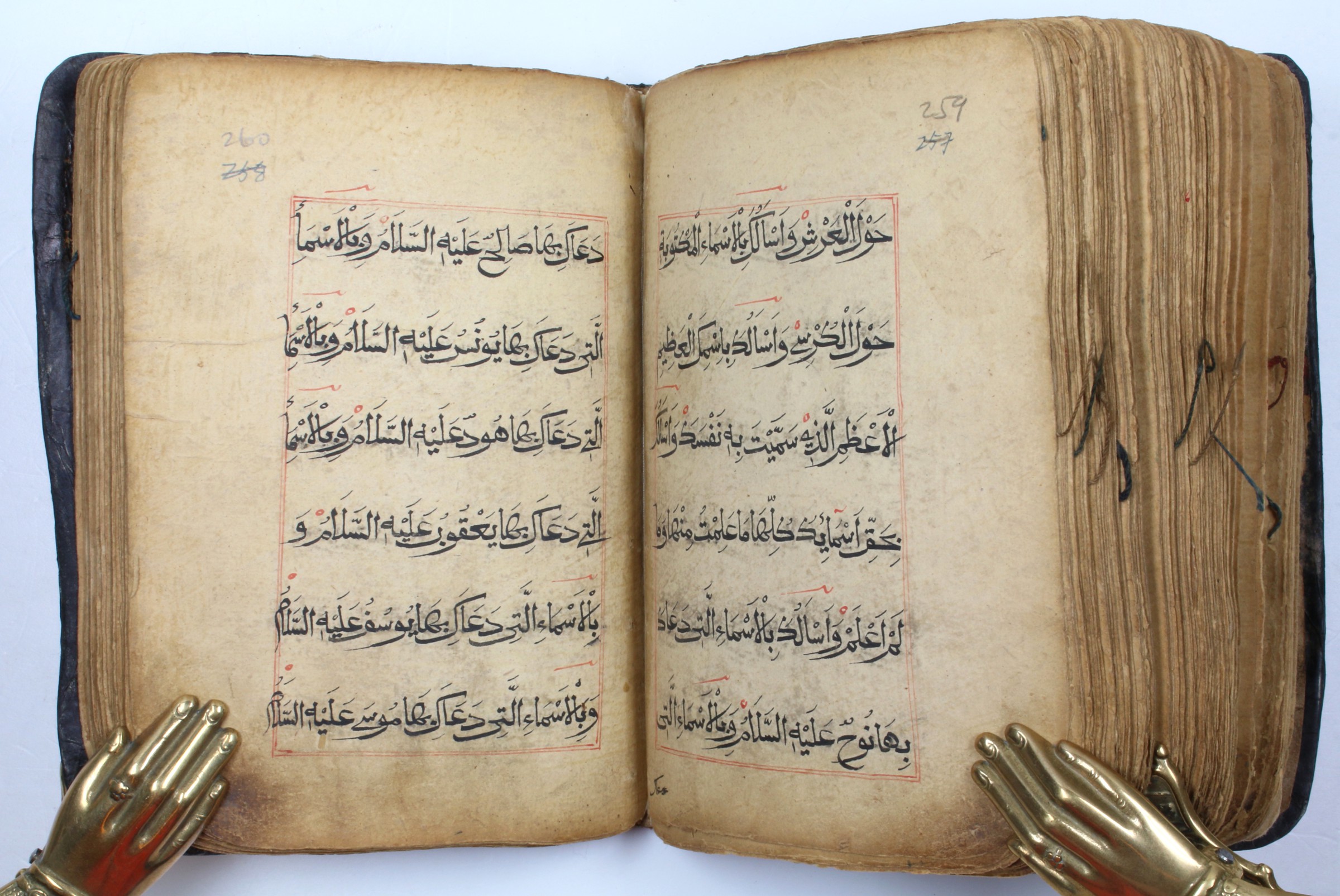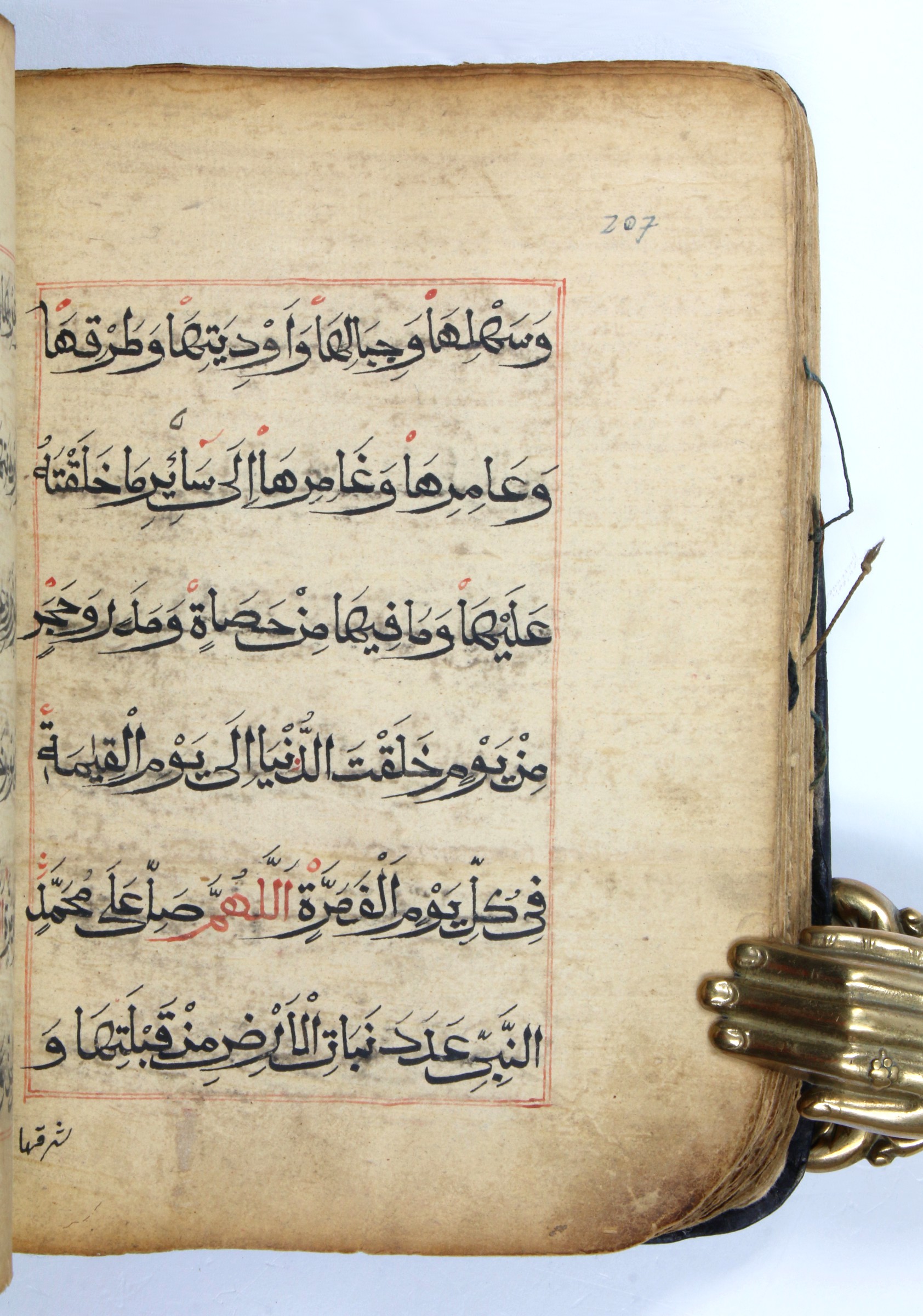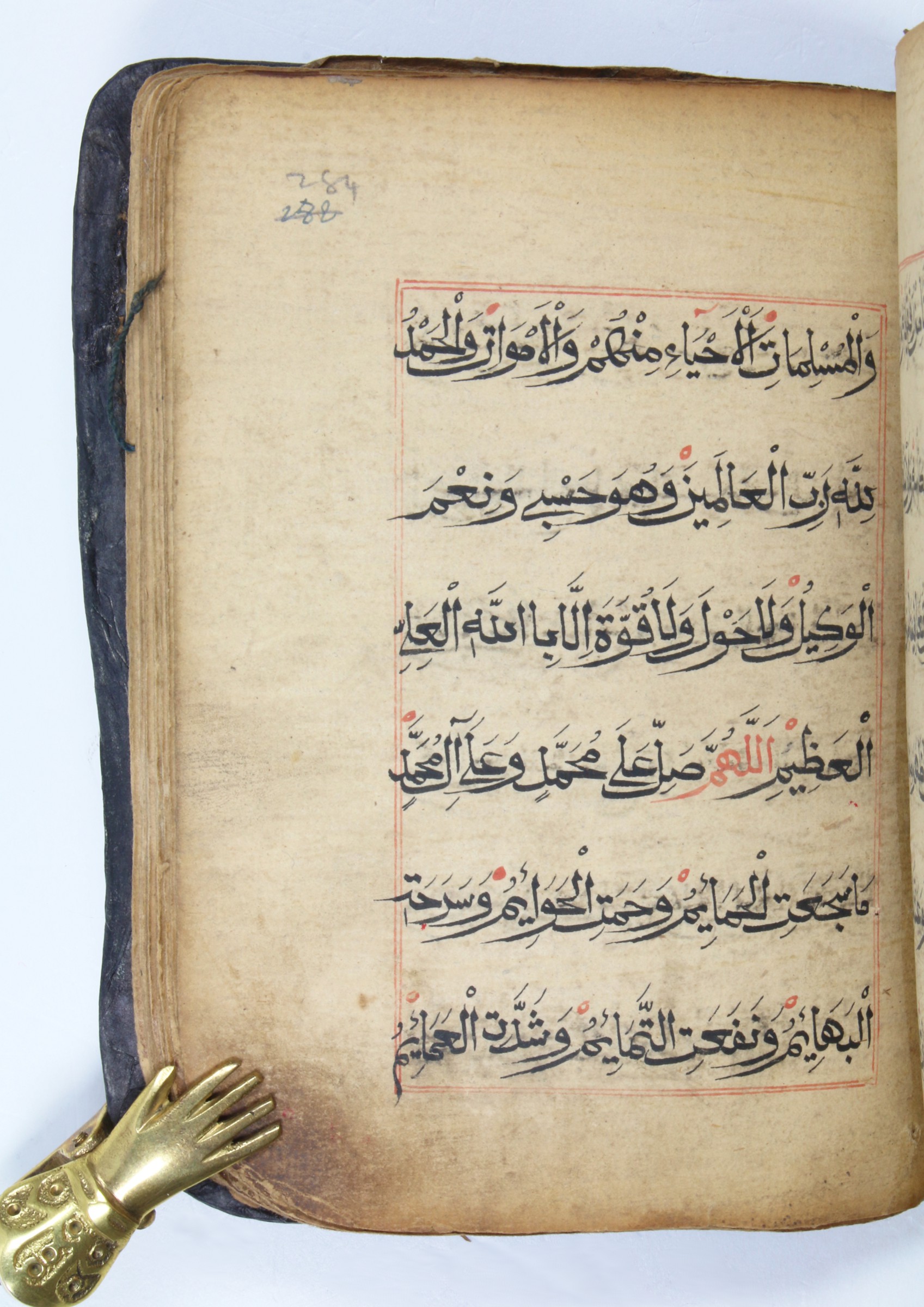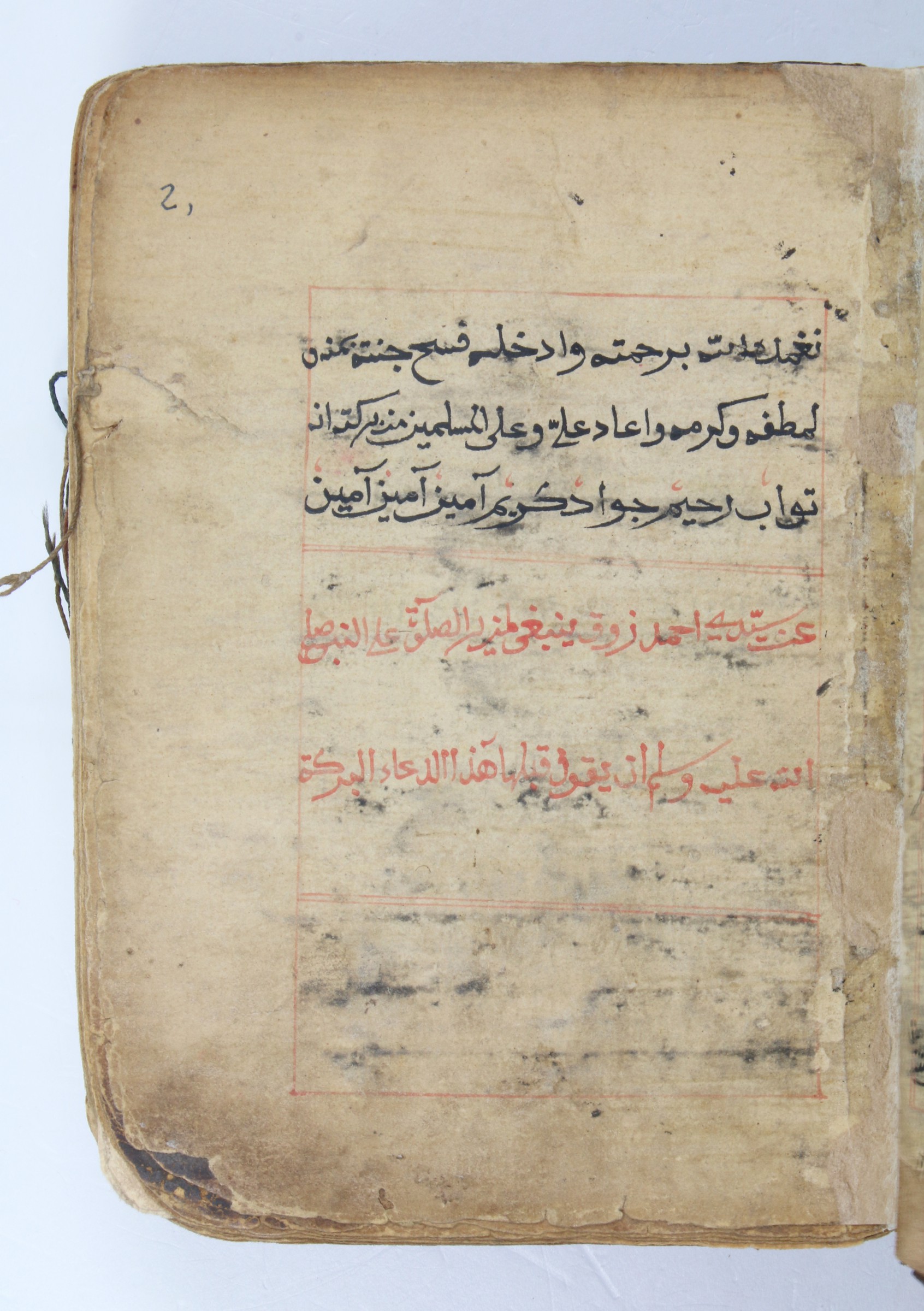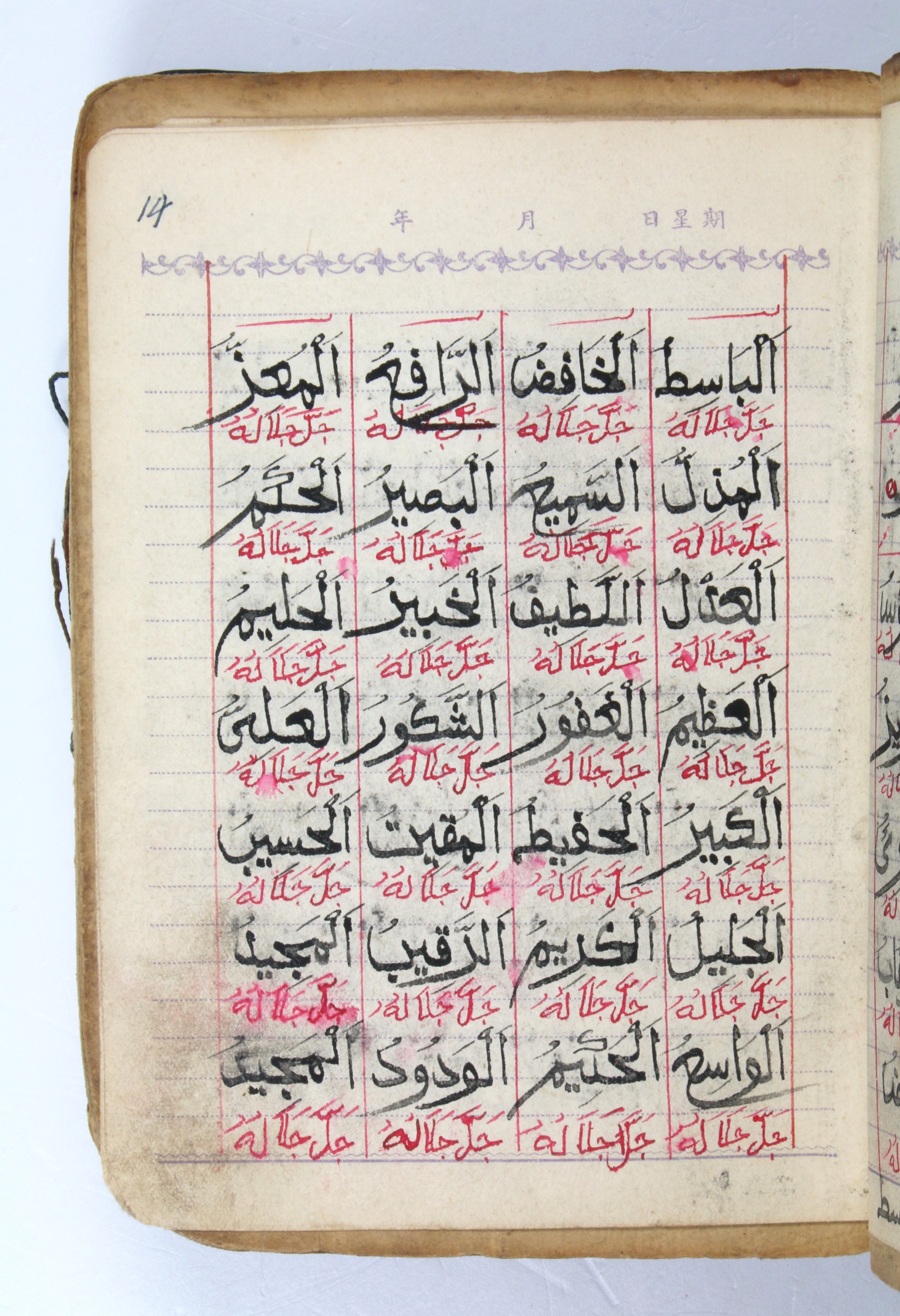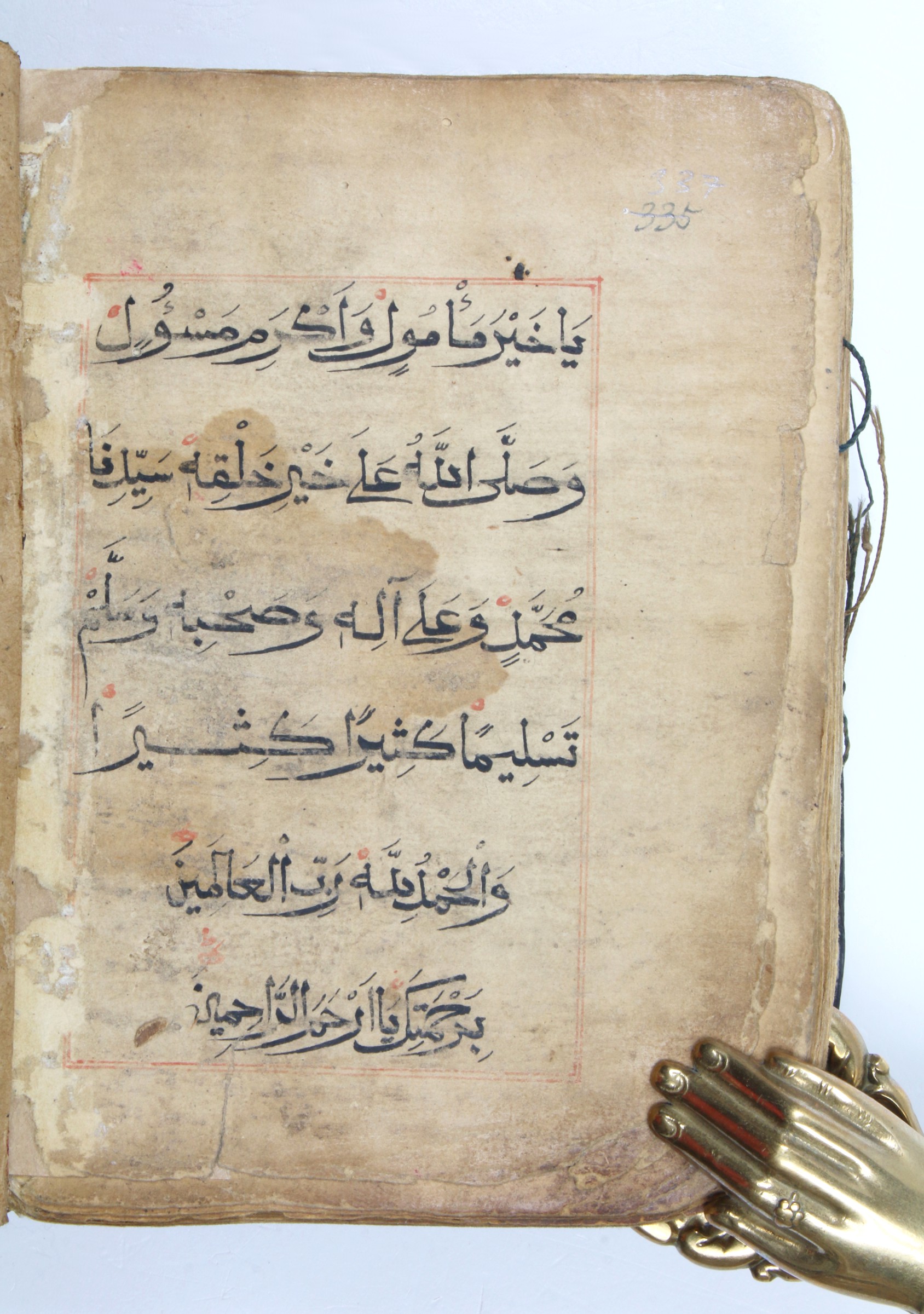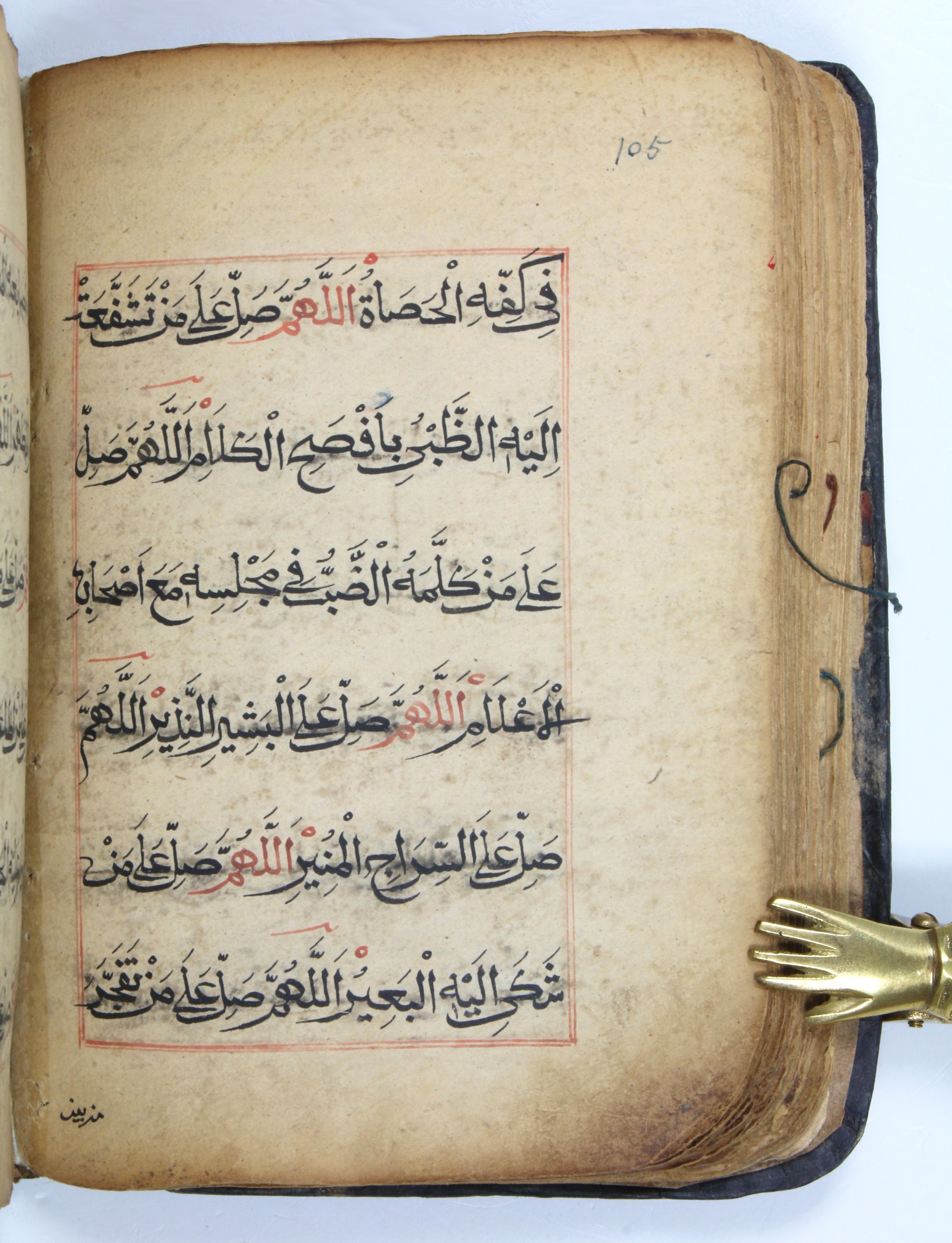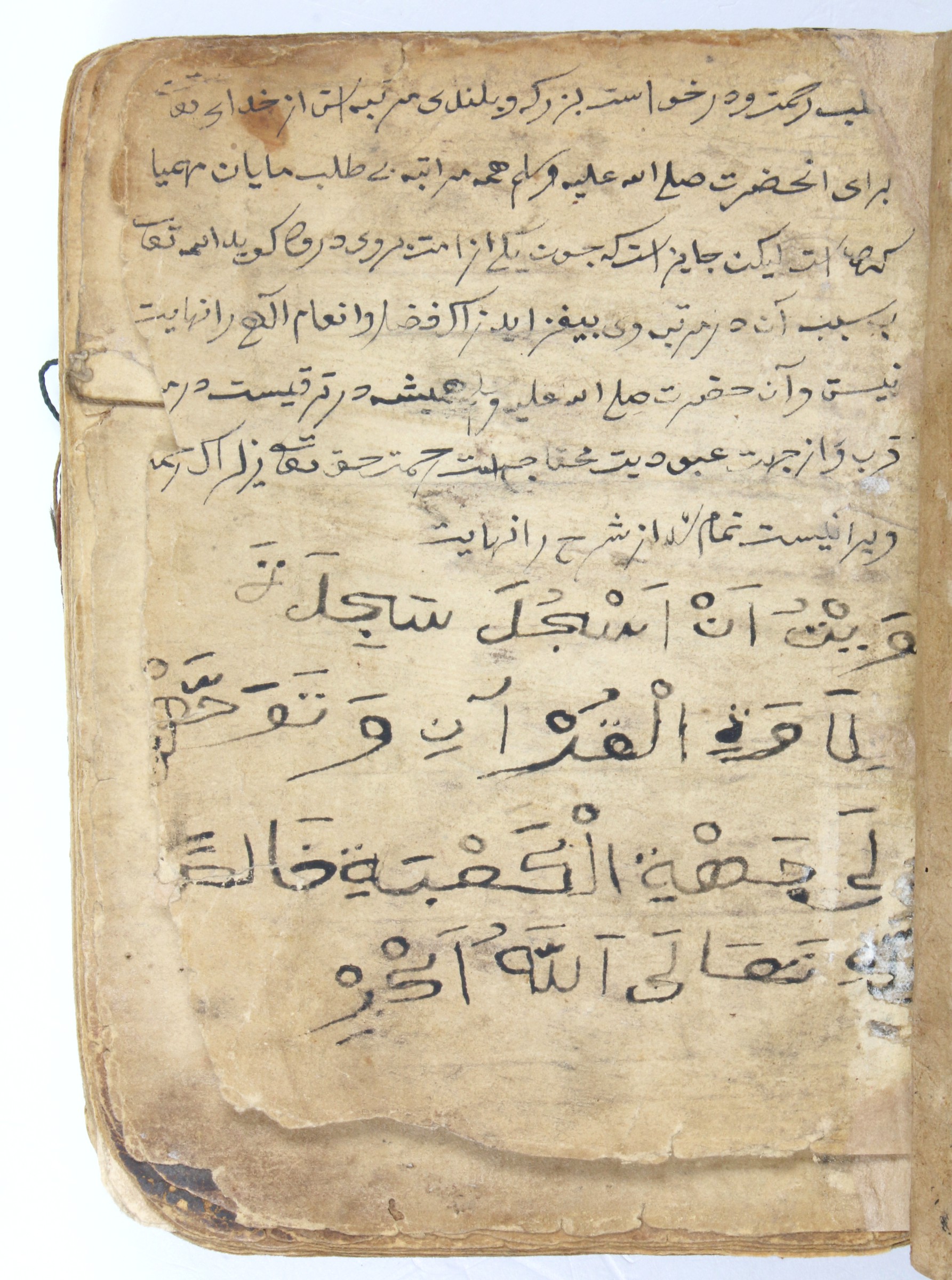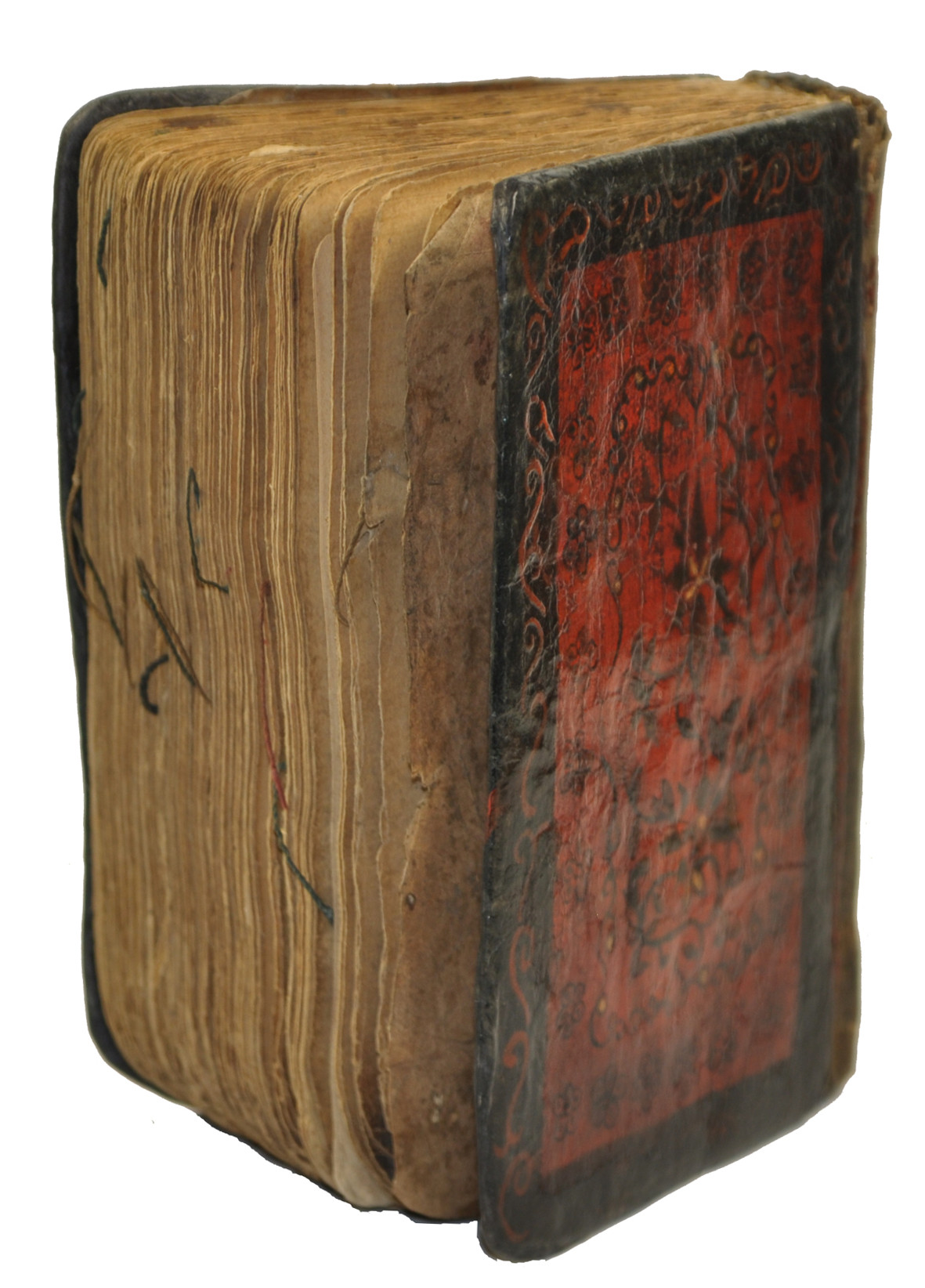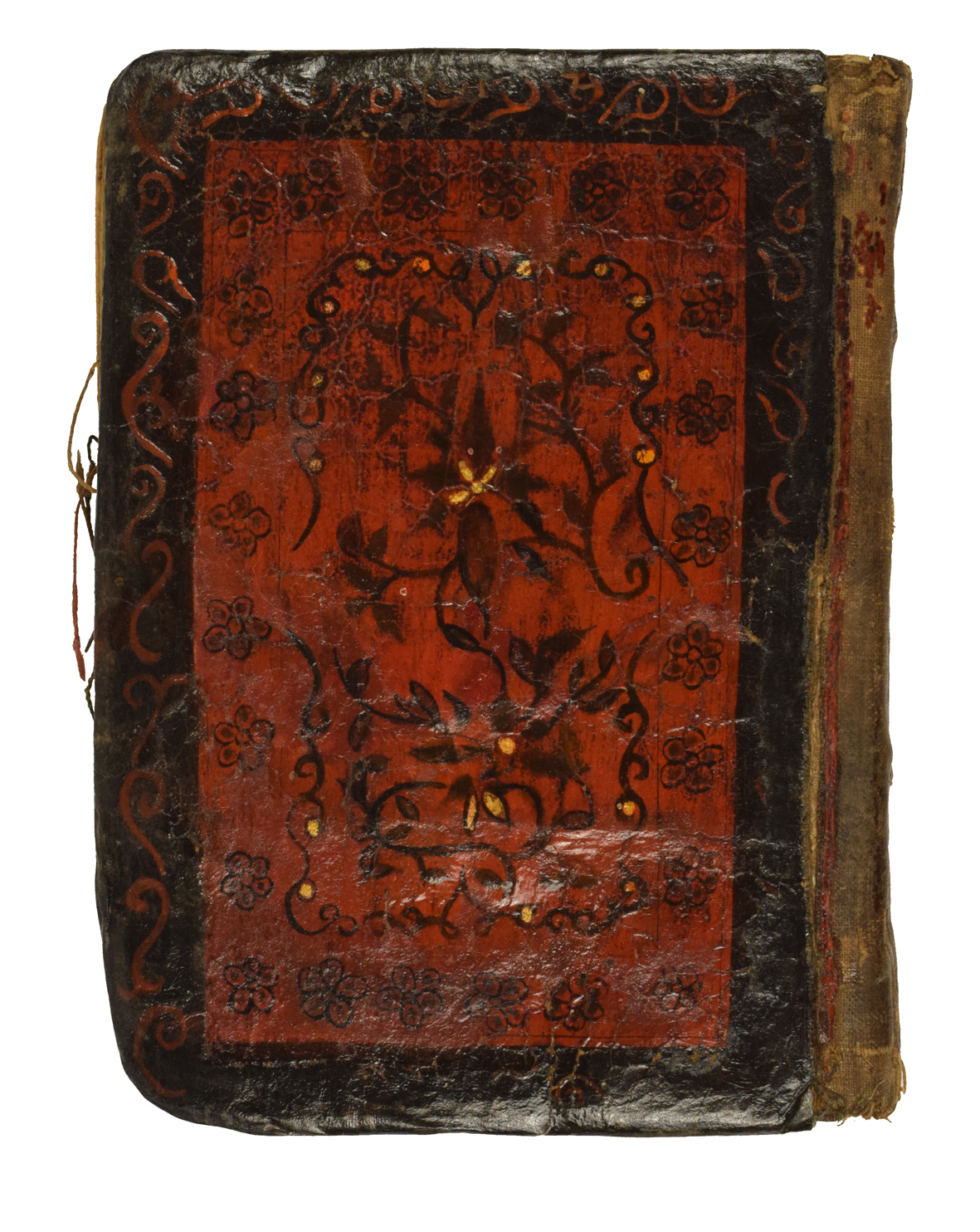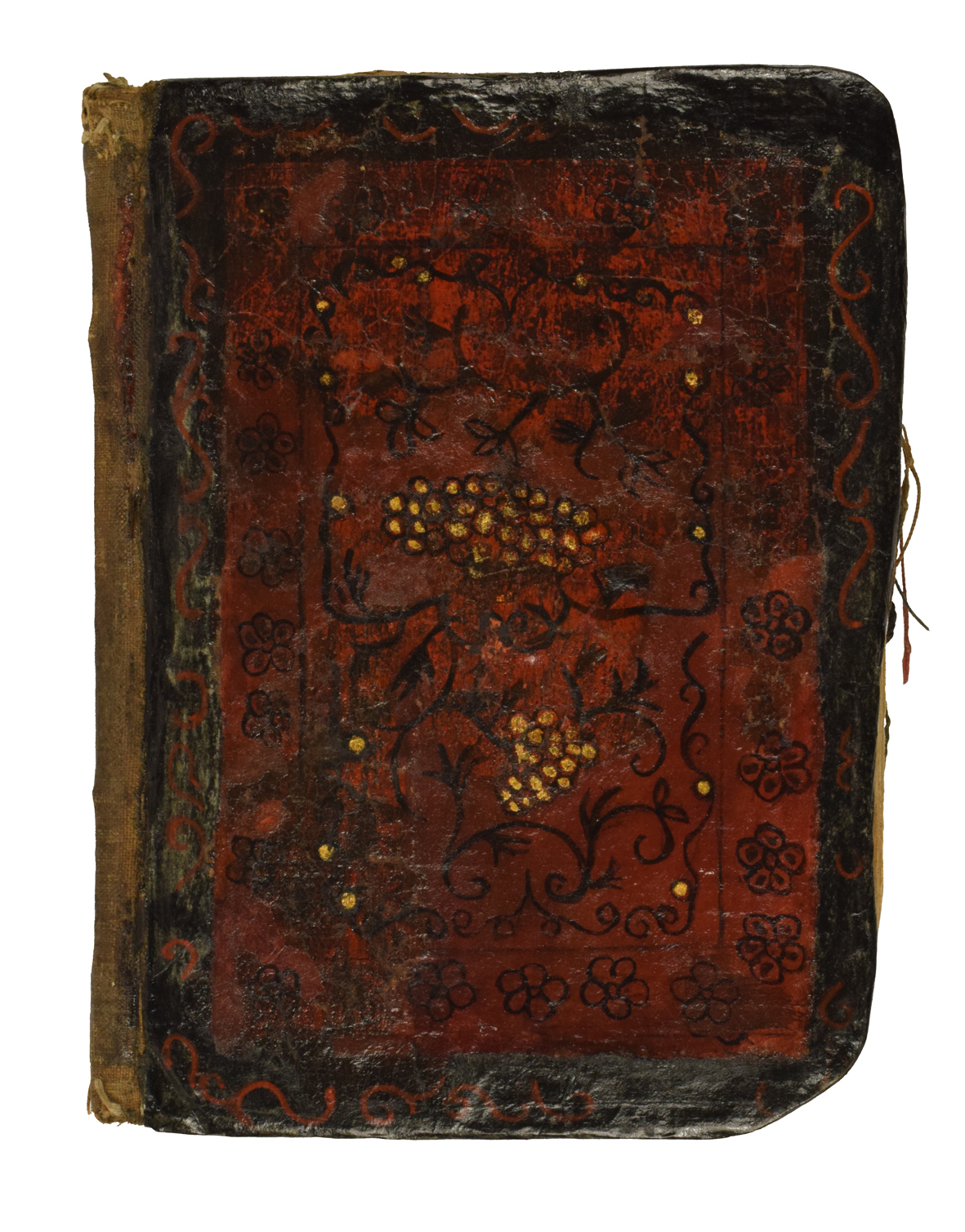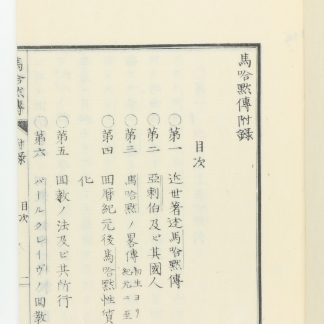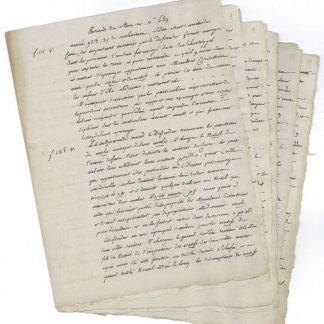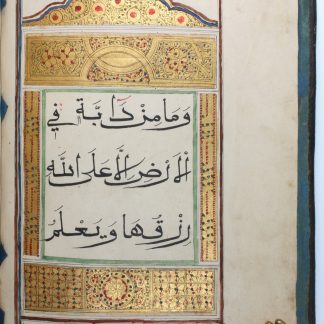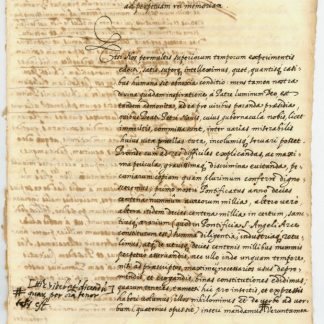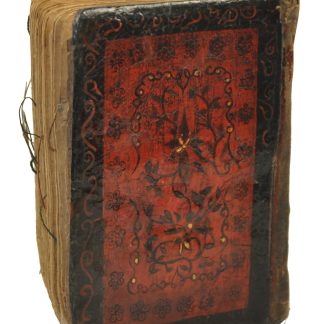Dala'il al-khayrat written in China
Dala'il al-khayrat ("Waymarks of Benefits").
4to (140 x 190 mm). Complete Arabic manuscript on strong Chinese paper. 165 ff. (337 numbered pages), leaf size ca. 132 x 182 mm, written space ca. 82 x 128 mm). 6 lines, per extensum (except 4 lines on pp. 3-4; 11 lines on pp. 11-34). Illustrations of the Kaaba in Mecca and the burial sites of the first three Rashidun Caliphs on pp. 47-48. Text written in "sini" calligraphy typical of Chinese Muslims, in an archaic form oscillating between naskh and muhaqqaq. Black ink, various sections highlighted in red, text within single or double red rules; sporadic notes or corrections on the margins. Contemporary black, red and gold painted and lacquered over paper and cloth. Painted boards show floral designs in black and gold on a red background, all within a black border with red wave designs. With remnants of leather on the brown cloth spine.
€ 38.000,00
Extremely rare specimen of the famous Sunni prayerbook "Dala'il al-khayrat": an Arabic manuscript written in what is today Xinjiang, China.
The "Dala'il al-khayrat" ("Waymarks of Benefits" or "Proofs of Good Deeds"), an extensive book of poems in praise of the Prophet Muhammad, was compiled by the Moroccan Sufi scholar Muhammad ibn Sulaiman al-Jazuli (807-870 H / 1405-1465 CE) and was quickly received throughout the Islamic world, functioning as a kind of Muslim catechism. Al-Jazuli's inspiration for the book is said to have come before he left Fez to spend forty years in Mecca, Medina and Jerusalem, but he completed it in Fez during the last years of his life. The present manuscript, written in so distant an Islamic community as that of Eastern Turkestan, a territory dominated throughout by Mongols or Chinese, where Muslims were commonly viewed as strangers, gives striking evidence of the range and scope of a tradition lasting for almost six centuries: the utopia of Islam as the Religion of Oneness, aiming to unite all the Muslim peoples in a single community reaching from Europe to the Far East.
The text begins with an introductory praise of Muhammad, followed by the 99 names of Allah (leaves 1-46) and a compilation of eulogies and prayers divided into seven subsequent chapters (each referred to as "juz", or "section"): 1, pp. 46-113; 2, pp. 113-136; 3, pp. 136-181; 4, pp. 181-217; 5, pp. 217-236; 6, pp. 236-256; 7: pp. 256-end. Interestingly, the double page 47/48 does not show Mecca and Medina, as is typical for manuscripts of this text, but rather presents naive illustrations of the "Ka’ba of Allah" (!) and the burial sites of the first three Caliphs. No date in colophon, written in the form of prayer. Leaves 12 to 19, extraneous to the text proper and containing additional prayers and the 99 Names of Allah, are inserted on contemporary Chinese paper. Edges worn; lower corner rounded and fingerstained from long use, but very well legible and altogether well preserved.


